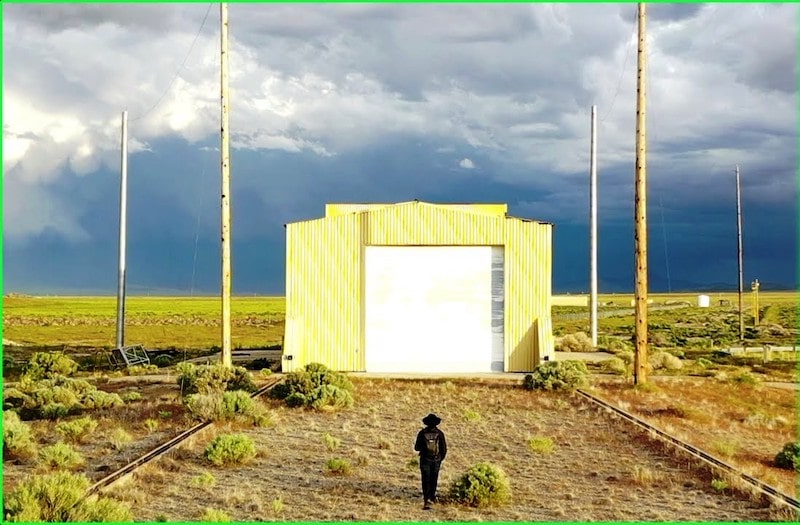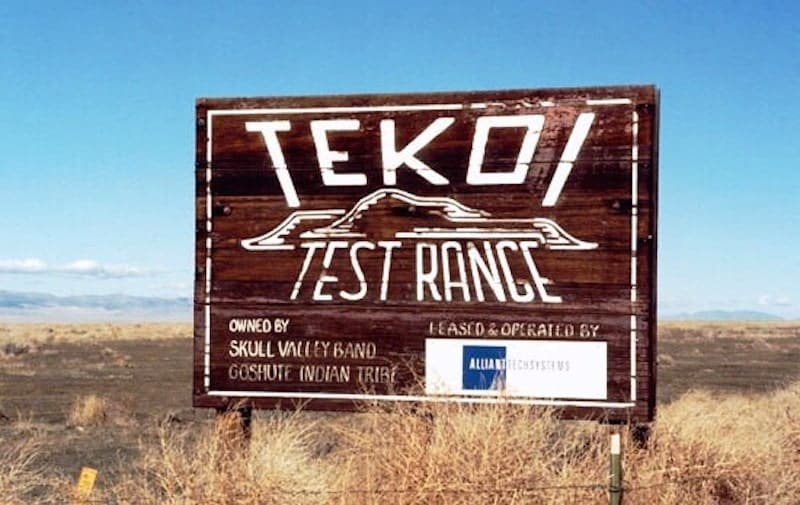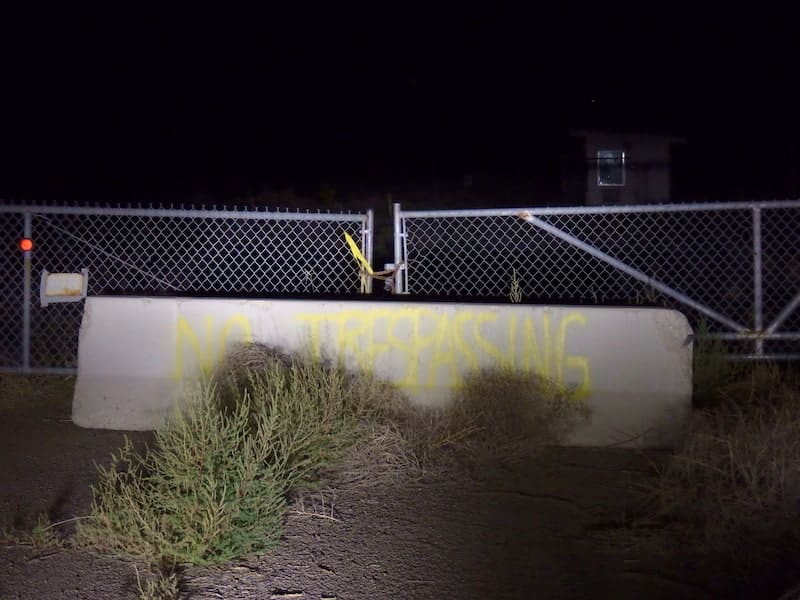
In a remote part of the desert in Tooele County, about 80 miles southwest of Salt Lake City, stands an abandoned yellow shed that was once used to test rocket motors capable of delivering a retaliatory nuclear strike in the event of a Soviet missile attack.
Like the anachronism that it is, politically and otherwise, the shed stands in stark contrast to the surrounding landscape. While not visible from the public road, it is off-limits to all but an intrepid few, and may still be under military surveillance.
About the size of a large garage, and encircled by lightning rods, the shed and other structures look oddly out of place amid the sagebrush and cheat grass that surrounds them. Abandoned and virtually forgotten for decades, this is a derelict monument to nuclear proliferation and Cold War collaboration.
Welcome to the Tekoi Rocket Test Range.

Built by Hercules Inc. in 1976, Tekoi was a solid fuel rocket motor test and calibration site operated by Hercules Aerospace under contract by the US Military, and was operational throughout the 1980s and 90s. In the early 90s, Alliant Techsystems (ATK) purchased Hercules along with its Bacchus facility in Magna.
Both Hercules and ATK were vital military suppliers of solid fuel rocket motors capable of delivering Inter-Continental Ballistic Missiles (ICBMs) from underground silos and nuclear submarines during the US/Soviet nuclear arms race, guaranteeing not only mutually-assured destruction of both countries in the event of a nuclear attack by the Russians, but total global annihilation.
Despite the advanced technology that was being produced by Hercules and ATK, the shed itself was not a high-tech structure. Its corrugated steel walls and roof were on rails that allowed it to roll backward, exposing a large concrete block that deflected the blast from a stationary rocket motor without melting the shed.
Located on Goshute tribal land in Skull Valley, about 10 miles north of the Army’s Dugway Proving Grounds (also known as Area 52), Tekoi is a relic of the US/Soviet disarmament agreement known as START (Strategic Arms Reduction Treaty) which was signed in 1991 by George W. Bush and Mikhail Gorbachev.
Because of Soviet involvement, the most peculiar aspect of the Tekoi site was the signage at the gate, which was in Russian.
According to author Lea Rekow, “Russian signage on the perimeter of the facility is due to the fact that this site was designated as “inspectable” for Russian inspectors as part of the START Treaty (as were other sites in Utah that were used for the development and storage of submarine launched ballistic missiles, at Oasis, Hill AFB, and ATK at Magna).”
Prefabricated houses at the site “were shipped from Russia for the Russian inspectors and were complete with Russian furnishings and electricity scrubbers,” ensuring that the Americans hadn’t planted listening devices in the walls for the purpose of eavesdropping on their Soviet counterparts.
ATK’s lease expired in 1999, and control of the land fell to the Goshute Tribe. It remains mostly unchanged today except for the slow intrusion of desert vegetation and the ravages of time.

In the words of one anonymous blogger in July 2010, “[When] the site was abandoned, they (ATK, I believe) left a lot intact. There is a gate with a small guard shack that marks the entrance, but no lock on the gate or any No Trespassing signs. There are about a dozen above ground buildings, and 5 or 6 bunkers. Everything was accessible except the guard shack ― which still had name tags hanging on a bulletin board, and locks on a row of lockers.”
As this author discovered, a concrete barricade now blocks the padlocked gate. This is unfortunate, because, in addition to the above-ground structures, there exists the probability of an underground portion of the facility just begging to be explored.
Rocket production in Utah continues to this day, with much of the current testing being done at the Thiokol plant near Promontory. U
RELATED CONTENT
San Rafael Secrets: What Did Madame Marie Curie Do in the Middle of a Utah Desert?
The Legacy of The Man Who Photographed Women Wearing Body Paint in the Utah Desert
Mysterious Monolith found in Utah desert. Digital Sleuths Find Location
Wild Mustangs in Utah’s West Desert
Salt Lake’s Early Days: Prostitution in Utah
SUPPORT LOCAL JOURNALISM AND SUBSCRIBE TO PRINT MAGAZINE
Subscribe to Utah Stories weekly newsletter and get our stories directly to your inbox






